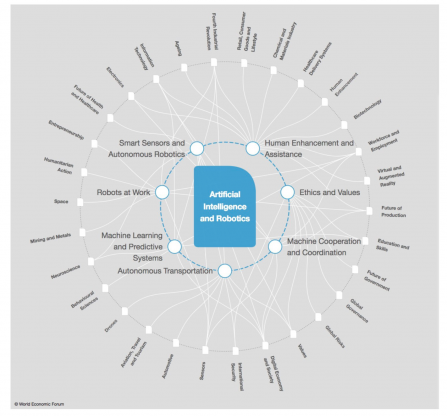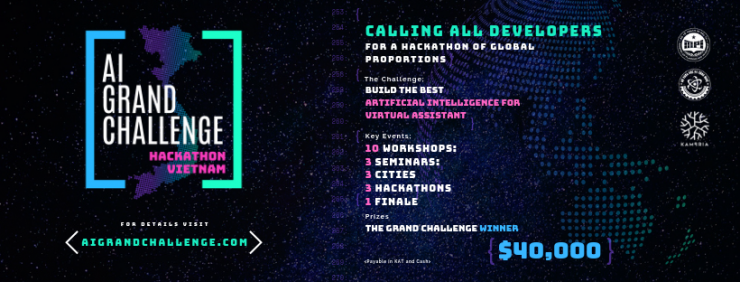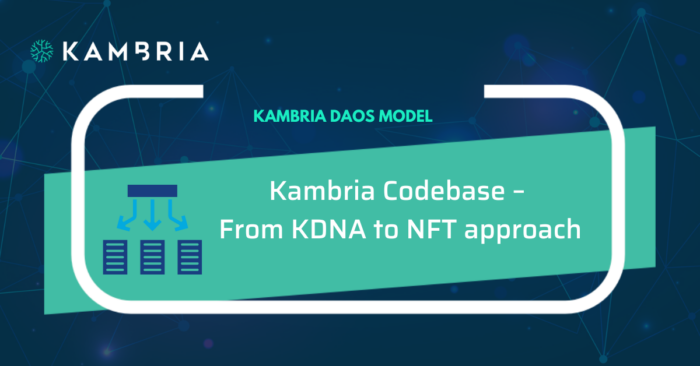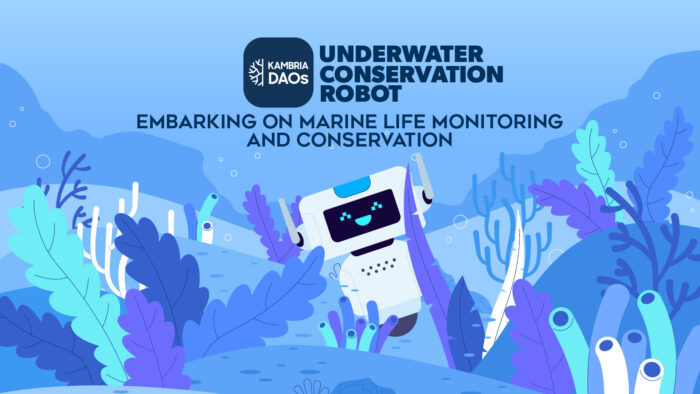
Rwanda in Africa is a mountainous country with limited transportation, which poses challenges to the delivery of life-saving medical equipment and blood products. Zipline, a drone company funded by the Global Alliance for Vaccines and Immunization (GAVI), can deliver blood to rural clinics in less than 30 minutes. In its first year alone, the program helped save 929 women's lives. As we enter the Fourth Industrial Revolution, we see more technologies like Zipline having a positive impact on people and society.
The Fourth Industrial Revolution is the convergence of new technologies that will bring about significant change in the everyday lives of humans. Some of the technologies include Artificial intelligence, Robotics, IOT, Quantum computing, Virtual Reality (VR), Augmented Reality (AR), Unmanned Aerial Vehicle (UAVs), 3D printing and Blockchain. The ability of these technologies to work in unison will significantly alter economic structures and disrupt countless industries. The combination of technologies at this scale is unique to the Fourth Industrial Revolution, thus the potential of growth is exponential. According to Klaus Schwab, Founder and Executive Chairman of the World Economic Forum, “Robotics, and artificial intelligence generally, are truly at the epicenter of the Fourth Industrial Revolution.” What is the role of AI and Robotics? Let’s find out.
What is the Role of AI?
Artificial intelligence is the development of technology to replicate and improve upon human intelligence. Artificial intelligence can be classified into three sub-categories:
- Artificial Narrow Intelligence: AI that can perform a singular simple task such as voice recognition
- Artificial General Intelligence: AI that can perform multiple tasks across a number of different areas
- Artificial Super Intelligence: AI that has the ability to produce “intelligence” beyond that of human capability
Today, AI is of particular importance to some of the biggest tech companies in the world including Alphabet, Baidu, Microsoft, Facebook & Tesla. Each of these companies has their own ambitions as to how they will utilize AI to deliver the most utility for their business. The AI focus of each company tends to differ which will result in multiple AI applications across a number of industries, all of which will ultimately have a great impact on human’s lives.
For example, you will be able to wake up in the morning and watch the daily weather report, news feed and appointment reminders in your smart mirror. After breakfast, your fully autonomous car has stopped your door, and the destination is set to your office so that you can sit comfortably in your seat and prepare for the day's work. You don't trust your pet at work so you turn on your mobile phone and find it playing happily with the robot housekeeper. On the way home from work, turn on the air conditioner in advance to create a cool environment for yourself. This is just a small piece of life; artificial intelligence not only brings the imagination to life but also changes the way we enjoy our lives.
What is the Role of Robotics?
Robotics and Artificial Intelligence are destined to be inherently intertwined. A majority of early robotics were “pre-programmed” to produce a pre-determined physical series of movements for manufacturing or transportation. While this is still efficient in some circumstances, robotics that leverage Artificial Intelligence can improve upon original, basic programming to be able to continuously increase efficiency. For example, an “Intelligent Robot” that manufactures a range of products from multiple inputs can over time develop and execute a production schedule that is multiple times more efficient than original programming.
There are a number of companies utilizing robotics in ways that have transformed their business including retail-tech giants Amazon and Alibaba. These companies use robotics to perform simple fulfillment tasks that would otherwise be undertaken by human employees.
Outside of retail-tech companies there also robotic development companies such as Boston Dynamics and Ubtech that are working on numerous humanoid robotic prototypes that can be applied in a number of scenarios.
The significance of robotics development is in the fact that humans have economic, physical, mental and social needs combined with legal precedents surrounding employment laws which leads to somewhat of a handicap in efficiency. Robots do not have the same needs as humans nor do companies need to abide by employment laws, which results in exponential growth in efficiency and output. The development and implementation of robotics will eliminate a significant portion of low-skilled manual jobs currently occupied by workers.
Meanwhile, robots will be also a part of the latest technological innovations. According to Data Analysts, in the next 30 years, the global economy will change under the risk of inequality. As the machine gradually takes over everything from caring for the elderly to flipping burgers, machine intelligence revolution will revolutionize the global economy and cut costs, but also intensify social inequality. In addition to letting robots do physical work instead of humans, the development of AI and robotics means that computers will be able to think more and more. This trend in the market, as we’ve seen in the US, shows many of the jobs created in recent years to be low-income, manual, or service jobs, which are generally considered to be highly risky. Robotics and AI will replace humans in doing a lot of work, which leads to the possibility of exacerbating the polarization of workers, especially for low-income, service occupations. Robotics will also pose a great threat to the middle-income manual labor profession.
Regardless of the drawbacks, Artificial intelligence (AI) and robotics will definitely lead the Fourth Industrial Revolution. The main feature of this trend is the integration of technologies. The convergence of mobile Internet, cloud technology, big data, new energy, robotics, and AI will increasingly eliminate the boundaries of the physical world, the digital world and the biological world. These technologies will come together and open up a whole new era.
Kambria's Role
As a spin-off from the sister company and telepresence robot manufacturer, OhmniLabs, Kambria aims to develop and launch a blockchain platform that allows AI and Robotics industry professionals to develop faster, cheaper and easier. The OhmniLabs team found that, during their research and development (R&D) phase in creating their Telepresence robot Ohmni, they did a lot of work that had already been done before by other companies. After establishing OhmniLabs, they decided to launch Kambria to solve the industry’s waste and inefficiency problems.
By building our own open innovation platform, Kambria aims to accelerate the development of AI and robotics. The project centers around the Kambria codebase, called KDNA, in which everything and everyone comes together. KDNA is the modular language that enables different parts of the database to be combined and made into a specific robot or robotics part. The KDNA will contain the hardware, firmware, software and AI needed to build a robot. Surrounding the KDNA codebase will be the manufacturing alliance (KMA), the innovation marketplace, legal protection, and value capture.
Kambria is actively collaborating with top global universities like Stanford, Central Michigan University, and Nanyang Technological University. These types of collaborations can make a substantial difference, as a large part of the technological innovations are created through university research. Universities often struggle to obtain funds for research purposes and tokenization could be the key to support Universities in participating in Kambria’s marketplace assignments or crowdfunding campaigns.
Kambria’s goal is to maximize the role of AI and Robotics in strengthening the partnerships among all stakeholders in the frontier technology ecosystem.
AI is Now — Join the Movement!

This summer, in collaboration with the Vietnamese government, Kambria is spearheading the Vietnam AI Grand Challenge 2019, a hackathon series whose mission is to train young AI developers. With the support of knowledge partners such as McKinsey & Company and VietAI, the Grand Challenge will bring together the country’s best AI talent to support corporations in Vietnam and globally in designing the Ultimate AI Virtual Assistant.
The Vietnam AI Grand Challenge is part of Kambria’s Global Grand Challenge, which will take place in major tech hubs around the world, with the goal of growing Kambria’s user and developer communities. All hackathon participants will be utilizing Kambria platform’s bounty.
How to Participate:
- Register on the Kambria platform: https://bounty.kambria.io/
- Follow the Grand Challenge Facebook page for all upcoming event information: https://www.facebook.com/VietnamAIGC/
-
For more information: https://aigrandchallenge.com








